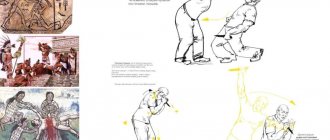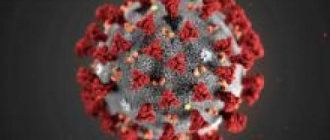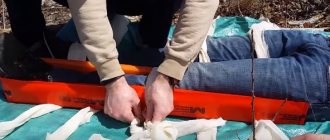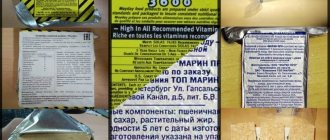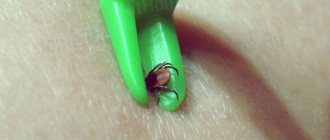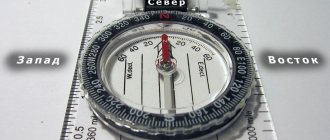First aid
- Visual inspection of the wound.
- Rinse the cut with water.
- Do not come into contact with the wound itself to avoid infection. But when the cut was caused by a dirty object, contact cannot be avoided. It is necessary to thoroughly rinse the wound with a cleansing and disinfectant. If you don’t have this on hand, then baby soap will do.
- Severe bleeding and should be stopped. Either by pressing a finger on the blood vessel, or, when possible, apply a tourniquet. If the cut is on an arm or leg, keeping the limb higher than the level of the body will reduce bleeding. You just need to lay the victim down and raise his arm/leg.
- Before applying a tourniquet, it is necessary to determine which vessel is damaged: a vein or an artery. Arterial blood is bright red, scarlet. Venous is darker, almost burgundy. A tourniquet is applied to the artery above the wound. On the vein - below the cut. The duration of use of the tourniquet depends on the patient’s condition, on average - from 40 minutes to one and a half hours. Otherwise, tissue necrosis may begin.
- Repeated disinfection of the wound after bleeding has stopped. The best option is hydrogen peroxide. If the wound is deep, then you need to ensure that the peroxide does not contribute to the formation of an air plug in the blood vessel. For minor cuts, you can use alcohol, brilliant green, and iodine for disinfection.
- Final procedure. Apply a damp bandage (sterile) or rag to the wound. When dry, they can stick to the wound.
While essential procedures are being performed or immediately upon completion, you should call an ambulance. If the injury is not particularly dangerous, you can go to the nearest hospital yourself. Below we will tell you in detail how to treat cuts. We will also consider the order of procedures, depending on the depth of the damage.
General rules

Most often, when bleeding, first aid must be provided very quickly, so knowing how to properly treat a wound can save a person’s health, and sometimes life. Regardless of what type of injury was received, the following rules must be followed:
- the affected area must be completely immobilized;
- Before carrying out the procedure, hands should be washed thoroughly;
- It is advisable to use disposable medical gloves;
- the treated area should be immediately covered with material to prevent bacteria from entering there;
- wound disinfection should be carried out only with sterile materials and instruments;
- When initially treating a wound, it is better not to use any ointments or powders, as this can lead to an increase in healing time.
If there are no sterile materials nearby and the victim needs emergency care, the material can be ironed with a hot iron and used to cover the wound. Wound treatment is usually done to prevent bacteria from entering the wound site. But in cases where the bleeding is too severe, perhaps even threatening the life of the victim, first of all everything must be done to stop it. Only in this case is it even possible to neglect the sterility of the material.
Treatment of the wound after injury should be carried out as soon as possible. As a last resort, the wound can be disinfected within the next 6 hours after the injury.
The first stage of treatment is inspection and washing of the wound.
How to properly treat a cut on your finger? If a finger is damaged, the treatment procedure is divided into 4 stages. The first is inspection and rinsing. Inspection of the cut is done to detect foreign objects in the wound. These may be remnants of what caused the damage; particles of dirt; pieces of glass. It is better to remove a foreign body using tweezers. Then it is recommended to wash the cut. To do this, pour hydrogen peroxide onto the wound. As a result of a chemical reaction, the drug will begin to foam. This way, any remaining dirt that hasn't been removed will be washed out of the cut. Additionally, hydrogen peroxide will disinfect the wound. Furacilin solution and soapy water are also suitable for washing a cut. If the choice was made in favor of a soap solution, then the wound should be rinsed with additional clean water. This stage is no less important than the next three. The correctness of its implementation will determine how quickly the wound heals and what kind of scar remains.
Means for treating the surface of a sutured wound
The treatment consists of 2 stages - cleaning the skin adjacent to the scar. The epidermis is cleaned with a soap solution and hydrogen peroxide. It is necessary to avoid contact with liquid on the damaged area. After these manipulations, a sterile bandage is applied.
Do not touch or pull the threads that tighten the seams and knots. There is a risk of injury and divergence of the skin edges.
Antiseptic agents for treating a sutured wound:
- Hypertonic salt solution (or sodium chloride) with a concentration of 10%. For external use only. The drug has a detoxifying, disinfecting, drying effect. There are no contraindications.
- Potassium permanganate solution (potassium permanganate). The crystals need to be dissolved in boiled water. The color of the liquid should be pale pink. The drug has an antiseptic, drying effect. Avoid contact with eyes, do not use high concentrations, as this may cause burns and a low rate of tissue regeneration.
- Hydrogen peroxide. The drug softens and removes remaining pus and blood. Does not have a bactericidal effect. Apply using a gauze pad. Blasting is allowed. After the release of oxygen ceases, the wound should be dried with a cotton swab.
- Brilliant green (zelenka) has an antibacterial and fungicidal effect. Does not irritate the epidermis, but does not relieve inflammation. The product is applied to a previously cleaned seam using a cotton swab. The drug is incompatible with iodine and alkaline solutions. It may sting for some time after application.
- Chlorhexidine is a ready-made solution for external treatment of tissues. Has an antibacterial effect, is not active against fungal flora. Apply in a stream. The medicine is incompatible with soap and alkaline solutions.
- Miramistin is a ready-made solution. Active against pathogenic and fungal flora. Apply using a cotton swab or jet.
- Betadine (povidone-iodine based). Acts on bacteria, fungi, viruses and protozoan microorganisms. Apply to the seam using a cotton swab. The product should not be used for diseases of the thyroid gland, imbalance of thyroid hormones and in early childhood.
There is a wide selection of antiseptics on the shelves of pharmacies, from expensive to budget ones. You should buy the drug recommended by the doctor, based on the patient’s condition and medical history.
Blood stop stage
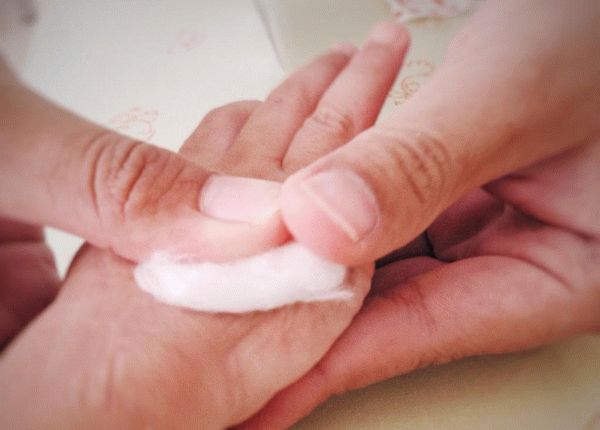
When the wound is shallow, the bleeding stops on its own. If the blood does not stop flowing after 15 minutes, then you should raise the hand with the injured finger, after applying a bandage. If blood comes through the bandage and does not stop for more than half an hour, then there are problems with clotting. You will not be able to stop the bleeding on your own. You need to go to the hospital department, as hemostatic drugs are needed. And then only the doctor will determine how to treat the cut on the hand.
In this case, it is forbidden to remove the applied bandage, as it sticks to the wound. And removing it will only increase the bleeding. Also, tightly and incorrectly applied bandages can cause irreparable harm.
Providing first aid for wounds
Any wound, even a small one, is accompanied by bleeding. Under no circumstances should you stop it immediately (at least for the first 1-2 minutes) so that pathogenic microorganisms and dirt do not enter the body. Then you should carry out antiseptic treatment of the wound with hydrogen peroxide. This remedy is a hemostatic, so to avoid bleeding, you can press a cotton pad soaked in peroxide onto the injured surface for 2-3 minutes.
This is interesting: First aid for drowning: briefly point by point
The surface of the wound cannot be treated with alcohol antiseptics; this can only be done on the area around it. After antiseptic procedures, it is better to apply a gauze bandage or plaster to the wound. Within 5 hours after injury, even small wounds should be examined by a doctor to exclude the possibility of infection.
First medical aid for puncture wounds involves mandatory removal of the foreign body. In no case should you remove pieces that may be deep or under the skin, so as not to catch adjacent blood vessels, nerves, muscle fibers, and tendons. This should be done by a specialist.
If the wound is cut, especially with kitchen knives that were previously used to cut fish or meat products, you must treat it with an antiseptic and immediately contact a medical facility for help. Such cuts can even lead to diseases such as sepsis and tetanus. Nowadays, cuts can be treated quite simply, and in many cases there is no need for stitches. There are a lot of medications and means that can be used to seal an incised wound, and the scars in this case are practically invisible. Wounds that result in numbness or difficulty moving should be examined by a specialist as soon as possible. Medical assistance is also necessary if you are injured by a rusty nail. Such damage must be washed thoroughly to prevent the formation of an inflammatory process due to rust.
Stage three - wound treatment procedure
After stopping the bleeding, it is necessary to treat the wound. If a bandage has been applied, it must be removed correctly. To facilitate removal without causing pain or to avoid re-bleeding, the bandage is moistened with a solution of furatsilin. This way, the adhered tissue will calmly move away from the wound. After removing the bandage, the cut is additionally wiped with the same solution until the bandage threads are completely removed. Afterwards, the wound should be dried with clean material. How to treat the cut on the finger further, iodine or brilliant green, does not play a big role. The main thing is to ensure that the disinfectant does not get on the wound itself, as it can burn living tissue and add pain. Only the edges of the cut need to be processed. A small amount of healing ointment should be applied to the wound itself. Otherwise, it will only soak the cut and delay healing. Finally, if necessary, a re-bandage is applied. The wound treatment procedure can be one-time or repeated. You need to watch how the edges of the cut are tightened. How to treat a cut wound after repeated dressings? The doctor will advise this.
This is interesting: Antiseptics for treating wounds
When to see a doctor
Although there are many types of wounds and the methods for treating them differ somewhat, the signs of the inflammatory process are usually similar. Even if some of these symptoms appear on the skin after a minor scratch, you should consult a doctor:
- the skin is red;
- there is a local increase in temperature;
- white or yellowish liquid oozes from the wound;
- palpation is accompanied by pain;
- swelling appeared.
If some of these symptoms occur, you should consult a doctor immediately. Even if a person knows how to treat a wound and does it correctly, he is still not immune from infection. A competent response to alarming symptoms will protect the health of the affected person!
Stage four - correct application of the bandage

To make removing the bandage easier, it is recommended to wrap your finger in a small piece of paper. It is pre-moistened with hydrogen peroxide. The paper will protect you from pain during the period of changing the bandage. Important: not every paper is suitable. Only clean (without printing ink), durable (napkins are not suitable), and not very rough are selected. Before applying a bandage over the paper, you need to try to connect the edges of the wound. This is important for deep cuts. The bandage should be tight enough, but not prevent bleeding. With proper blood flow, the wound will heal faster. Determining whether the bandage is too tight is simple: you need to watch your finger. If it starts to turn blue or becomes cold, the bandage should be loosened. For a small cut, a callus patch will also work. Changing the bandage is necessary once, throughout the day.
Characteristics of wounds by depth of lesion
Injuries may be:
- superficial;
- deep;
- end-to-end;
- blind;
- tangents.
If an abrasion or slight cut appears on the skin, such damage can be considered a superficial wound. With such injuries, the integrity of the tissue is damaged no deeper than the skin or the level of the mucous membranes.
Deep cuts damage tissue, muscles, bones and even internal organs. If the injury causes nerve damage, you may experience numbness and loss of sensation.
How to treat a deep cut on your finger? Sequence of manipulations
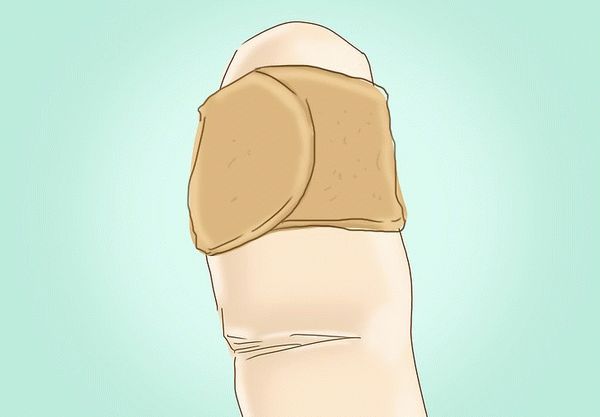
Deep cuts require more complex processing and proper attention. Since not only the skin and muscles are damaged here, the wound can harm tendons and nerve endings. There are cases with damage to bones. With a deep cut, the finger loses sensitivity and cannot bend or straighten. Only doctors can provide basic medical care. Sometimes it is necessary to join the tendons and muscles surgically.
What to do and how to treat a deep cut before the ambulance arrives or before going to the hospital? First of all, you need to determine which vessel is damaged: a capillary, artery or vein. If the blood flows spasmodically, pulsating, it means that an important vessel is damaged. Such bleeding requires urgent stopping by applying a tourniquet. To prevent tissue death, the bandage is loosened periodically (every 30 minutes).
When the blood is not flowing too much, you can let a small amount flow out. This is done so that the blood itself washes away foreign objects and dirt.
The cut must be washed, otherwise germs will quickly spread through the blood. Here again, hydrogen peroxide is recommended. It will wash away any remaining dirt, help stop the bleeding and disinfect the wound. Many people are interested in knowing how to treat cuts for quick healing. It is hydrogen peroxide that doctors recommend.
Do not wash deep cuts with running water. It contains substances that will harm the wound. After these procedures, you need to apply a not very tight bandage. You can use a bandage or cloth.
How to provide first aid for abrasions and wounds
First aid for abrasions and wounds is very important, since improper or untimely treatment of even a small wound can lead to serious consequences.
Any mother worries about the health of her child. After all, it is children who most often fall, hit themselves, and abrasions and scratches haunt them with enviable consistency. Therefore, mothers and expectant mothers must first of all know how to provide first aid in such cases.
It is worth noting that assistance with abrasions does not require any skills or knowledge. You need to remember the main rules:
- Before treating a wound or abrasion, you must wash your hands;
- Do not touch the wound itself or the skin around it to avoid contamination and infection;
- the person receiving first aid should lie down as comfortably as possible;
- when an abrasion or wound appears, it must be immediately covered with something (handkerchief, napkin, etc.);
- in some cases it is much more important to stop the bleeding than to disinfect the wound;
- Adhered bandages and plasters should not be removed from wounds and abrasions; they must first be soaked with furatsilin, peroxide and removed without causing pain;
- You should not tear off the crust (dried blood and lymph) that forms on the wound in order to avoid subsequent injury to the skin.
How to revive the victim?
Until emergency help arrives, you need to keep your hand above your head. If it is difficult for the victim, you need to help him in this matter. Often people are afraid of one type of blood and lose consciousness. In this case, the victim must be brought to his senses:
- access to fresh air is required;
- massage your earlobes;
- gentle blows to the cheeks;
- give ammonia a whiff.

Wound treatment: advice from doctors

Country house! What could be more wonderful for adults and children, especially in summer. Nature, vitamins and lots of outdoor games. But caring mothers always remember that they need to be on guard even in the country!
At the dacha, people regularly barbecue, light fires and bake potatoes, which means there is a danger of getting cuts or burns. And men also take up carpentry tools and begin to create masterpieces with their own hands - and here, too, you can get hurt.
Who among us hasn’t fallen off a bike and skinned our knees and elbows? Outside the city, we happily switch to two-wheeled vehicles and fly like birds, the wind with midges in our faces, until the first pothole...
The wounds may be different, but doctors and hospitals are far away.
At the height of the summer and holiday season, you need to update the contents of your home first aid kit - and remember the rules of first aid.
Often, incorrect actions in the first minutes after injury complicate subsequent treatment. Most often, people with burns are wise. But with other wounds there are overlays. What are the most common mistakes when providing first aid for various wounds?
When should you go to the hospital?
You need to go to the hospital in the following situations:
- For large and deep cuts.
- If the bleeding doesn't stop.
- It is not possible to remove a foreign body on your own.
- When the cut is caused by a contaminated object.
- Suppuration, swelling and discoloration of the skin around the wound began.
- Increased temperature and general weakness.
- The cut does not heal for a long time.
When contacting a doctor, you must tell them how the cut occurred and what measures were taken.
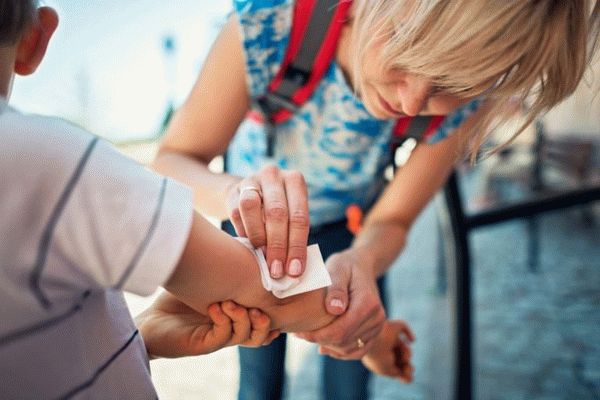
Treatment of deep wounds
It is necessary to understand that the treatment of deep wounds must be carried out followed by the provision of qualified medical care. Damage of more than two centimeters is considered deep, with penetration of foreign objects, when nerve endings are affected, causing sharp pain. Before medical care is provided, consisting of surgical suturing, it is necessary to treat the damage as quickly and efficiently as possible:
- First you need to stop the bleeding using a tourniquet or a pressure bandage.
- The skin around the wound is treated with a swab, folded bandage, and moistened with an antiseptic.
- The damage is washed away from any dirt that has gotten there.
- If the damage is serious, the wound will fester and become overgrown with granulation tissue. To relieve the inflammatory process, it is necessary to ensure a good outflow of pus.
- For the first two days, the injury is treated with a swab moistened with a 10% saline solution, chlorhexidine or hydrogen peroxide and the same bandages are applied.
- After 5-10 days, you can use antiseptic ointments that promote the outflow of pus (Vishnevsky, Streptocide ointment, Syntomethacin and the like).
- For lacerations, the damaged area is treated with a pulsating stream of antiseptic.
After receiving assistance while traveling, you should consult a doctor. Surgical assistance consists of applying sutures with preliminary dissection of the wound surface, treating with an antiseptic, cutting off the protruding uneven edges of the skin near the wound, and in the presence of a purulent lesion, installing a drainage for its outflow. After the inflammatory process is stopped, the doctor applies stitches. After this, the affected area is bandaged with a bandage and an antiseptic ointment is applied in complex treatment with antibiotics.
How and with what to properly treat a deep open wound
Fighting surgical infection is the key to successful treatment and wound healing. In addition to observing the rules of asepsis, antiseptics must also be observed. This includes a whole range of procedures for treating postoperative sutures with antiseptic solutions. Treatment begins immediately after surgical procedures and continues until a dense scar forms on the skin.
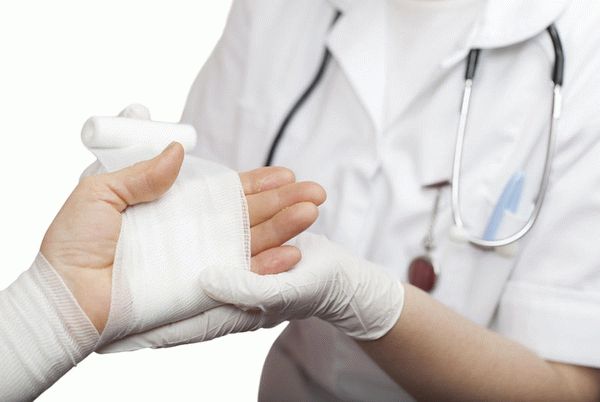
Why do you need to process seams?
The key to successful healing of a postoperative wound is clean, uninfected sutures. If antiseptics are not observed, the infection penetrates into the deeper layers of the skin, which causes purulent complications in the form of phlegmon, abscess and necrosis of deep tissues.
It is important to know! Healing time depends not only on the treatment of postoperative sutures. The duration of treatment is influenced by the patient’s age, the severity of tissue damage, the extent of surgery, and the course of the postoperative recovery period.
Treatment of abrasions and scratches
When the skin rubs against a hard, rough surface, abrasions and scratches form. The surface layer of the skin is damaged, small vessels are damaged, and pinpoint bleeding occurs. As a rule, a large surface of the skin is damaged, causing very painful sensations, since a large number of nerve endings are exposed. The difference between abrasions and deep wounds is that they heal quickly without leaving scars, since the damage does not affect the subcutaneous tissue.
Treatment of minor injuries involves cleaning the wound from dirt, soil, and other debris using water (preferably running water). After this, you need to carry out an antiseptic treatment and cover with a gauze bandage so that it does not stick to the surface of the skin.
If the scratches are heavily soiled, you need to wash them with special care. So, for wounds on the limbs or fingers, antiseptic baths are the best solution. If the torso, knees, or elbows are scratched, apply a damp gauze bandage to the damaged surface, and after the wound is dried, begin antiseptic treatment.
How to treat a wound
At the present stage, many groups of antiseptic solutions are used in clinical practice. The choice of one or another antiseptic depends on the nature of the wound, the presence or absence of pus in it, the timing of healing and the final goals of treatment.
Important! The antiseptic for use at home and in the hospital is determined by the attending physician. The name of the drug is given in the recommendations, and the duration and frequency of treatment of the postoperative wound are also indicated there.

Types of antiseptic solutions for external use at home and in the hospital
- Group of halogens. These include aqueous and alcoholic tinctures of iodine, potassium iodide, and Lugol's solution. Used for treating and washing wound cavities. They have a cauterizing effect. Sutures are treated with iodine preparations no more than once per knock.
- Salts of heavy metals. Currently, bandages and ointments with the addition of silver nitrate are widely used, as well as a 0.1-0.2% solution of silver nitrate for the external treatment of postoperative wounds. At a concentration of 5%, this solution has a cauterizing effect, so it is used only in cases of severe inflammation and weeping of the wound.
- Alcohols. Ethyl alcohol in solutions with a concentration of 40% is used extremely rarely. It is not recommended to use it on a dry, non-inflamed seam. It is used primarily for treating wounds that are in the phase of active inflammation.
- Dyes. This group includes the most widely used solution - brilliant green, better known as brilliant green. For external use, an aqueous or alcoholic 1-2% solution is used. It is used both on mucous membranes and on the skin. The wound is treated daily, at least 2 times a day.
- Acids. Here, a weak solution of boric acid (2-4%) is most often used. Boric acid is a good antiseptic that is used in the form of solutions, ointments, powders, and powders. Local treatment with boric acid is applicable to both mucous membranes and skin. Treatment of postoperative wounds is carried out at least 2 times a day: in the morning and in the evening.
- Oxidizing agents. Also widely used in medical practice. The most well-known drugs from this group are potassium permanganate and hydrogen peroxide.
This is interesting: Open fracture of the forearm first aid
Hydrogen peroxide is an active oxidizing agent used for the treatment and treatment of purulent wounds. It is more often used in hospitals to separate purulent contents and completely clean the wound surface.
Important information! The advantage of hydrogen peroxide is its hemostatic properties. Therefore, in case of suppuration and bleeding from a wound after discharge from the hospital, this is the first resort of medical aid.
Potassium permanganate has cauterizing properties. In low concentrations it is suitable for washing sutures in the oral cavity, in higher concentrations - for treating postoperative wounds. It is used for processing no more than 1 time per day.
- Detergents. 0.1-0.2% aqueous solution of chlorhexidine is one of the drugs in this group. It is used externally for processing and washing postoperative sutures, at least 2-3 times a day.
- Antibiotics. To combat bacterial infection, ointments have been developed with the addition of antibiotics and hygroscopic agents. They are used to apply bandages to purulent postoperative wounds. Use at home only in case of suppuration of the sutures. An example of such ointments is Levomekol ointment, Vishnevsky ointment.

Stages of healing: what to consider when providing first aid?
First aid for an abrasion on the knee or any other part of the body should be provided in accordance with the recovery period of the skin. Of course, the sooner the first treatment measures are taken, the better. However, in some cases, first aid for bruises and abrasions can only be provided several hours after the injury, so you should know what the injury looks like at each stage of recovery:
- During the first few hours, the surface of the damaged area has a rich red color with a pink tint. It is located slightly lower compared to intact skin and has a moist surface.
- After a day, the swelling around the abrasion subsides, and the pain begins to subside.
- On the second day, the injury site is located slightly above the intact skin due to the fact that a crust appears on its surface. From this time on, the wound gradually shrinks and decreases in size.
- On the fifth day, the edges of the scab become slightly undermined, and the area of skin around it begins to peel off.
- The crust disappears on its own in approximately 7-10 days, after which pale pink, slightly shiny skin can be observed in its place.
This is interesting: Poisoning with pills: what to do at home
What is necessary first of all for treating sutures and wounds?
For dressing, you will need an antiseptic, cotton wool or gauze pads, cotton swabs (can be replaced with regular cotton swabs), and tweezers.
Important to remember! Before starting treatment, you need to make sure the wound is clean. If there are foreign bodies, they are removed. If the wound surface is contaminated, the sutures are washed with a weak antiseptic solution or distilled water.
After cleansing, immediate processing is carried out:
- When using an ointment, take a gauze pad and apply the product to the surface. The napkin is placed on the wound surface, and a bandage is applied on top for fixation.
- If an antiseptic is used in the form of a solution, take a cotton swab and soak it in the liquid. Instead of a tampon, you can use a regular cotton ball or gauze, but you cannot grab it with your hands; use tweezers to grab it. Treat the wound surface with a thin layer, then wait for the solution to dry completely.
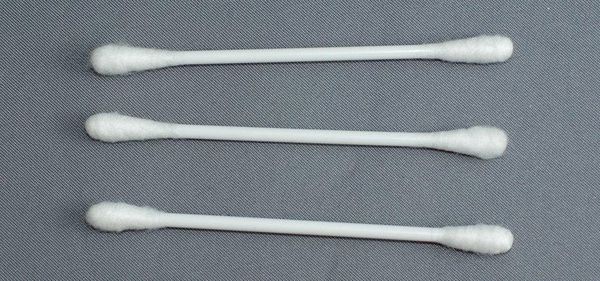
How to properly treat a wound and suture
Before the sutures are removed, the dressing is changed daily with solutions and ointments of silver nitrate, antibiotics, and hydrogen peroxide. Sutures are removed mainly on the 7th day after surgery. Immediately after this, the scar is cauterized with a solution of potassium permanganate and hydrogen peroxide.
On the day of discharge, the attending physician gives recommendations for further management of the postoperative suture and recommends a suitable antiseptic. Treatment at home is carried out 1-3 times a day, depending on the properties of the disinfectant solution. Cauterizing solutions are used no more than once a day. Treatment with water and alcohol tinctures is carried out 2-3 times a day.
Important! To effectively disinfect the wound, water procedures after treatment are not carried out for 2-3 hours. In the first days after discharge from the hospital, it is not recommended to wet fresh stitches and scars at all.
Classification of wounds
There are such wounds:
- chopped;
- cut;
- chopped;
- torn;
- bitten;
- firearms.
You can often get a puncture wound at home. This can happen while sewing with a needle, using a knife, or sudden contact with a nail. This type of wound is characterized by a deep but small area of skin damage. Because of this, such injuries are often susceptible to internal suppuration. They are difficult to rinse and thoroughly clean from residual dust, dirt and infection.
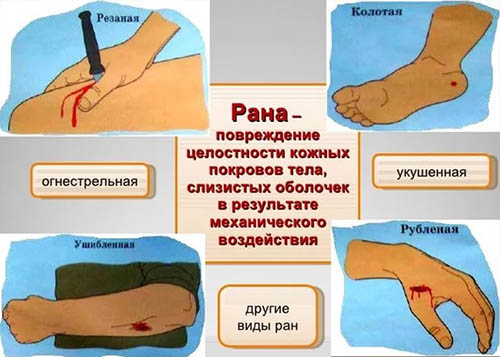
An incised wound is easier to treat. This type of damage occurs most often. The cause of injury can be careless handling of a razor, knife or glass. Cut injuries are characterized by severe bleeding. However, with proper initial treatment, there is no infection left and the skin heals quickly.
Incised wounds are very rare. They are very dangerous, since in addition to damaging soft tissues, the integrity of bones is often compromised. Injuries are accompanied by severe bleeding, the wound has uneven, torn and difficult-to-heal edges. In most cases, an emergency ambulance is required. Slash wounds occur as a result of being hit with a heavy object, such as an ax, or in car accidents.
Lacerations occur as a result of falls or severe bruising. They are characterized by difficult healing, a high risk of infection, and a large affected area. To avoid suppuration, it is better to treat such a wound as quickly as possible after injury.
If the wound appears due to an animal bite, it should be given special attention. It is not enough to simply wash the wound or apply a disinfectant. It is extremely important to consult a specialist so that he can recommend methods of prevention against rabies, which is often transmitted from sick animals. In addition to contracting a dangerous disease, there is a high risk of wound suppuration, because the animal’s saliva contains many bacteria.
Gunshot wounds can be through or blind. Most often, surgery is required to remove the bullet. Depending on the location of the injury, it can threaten a person’s life.


